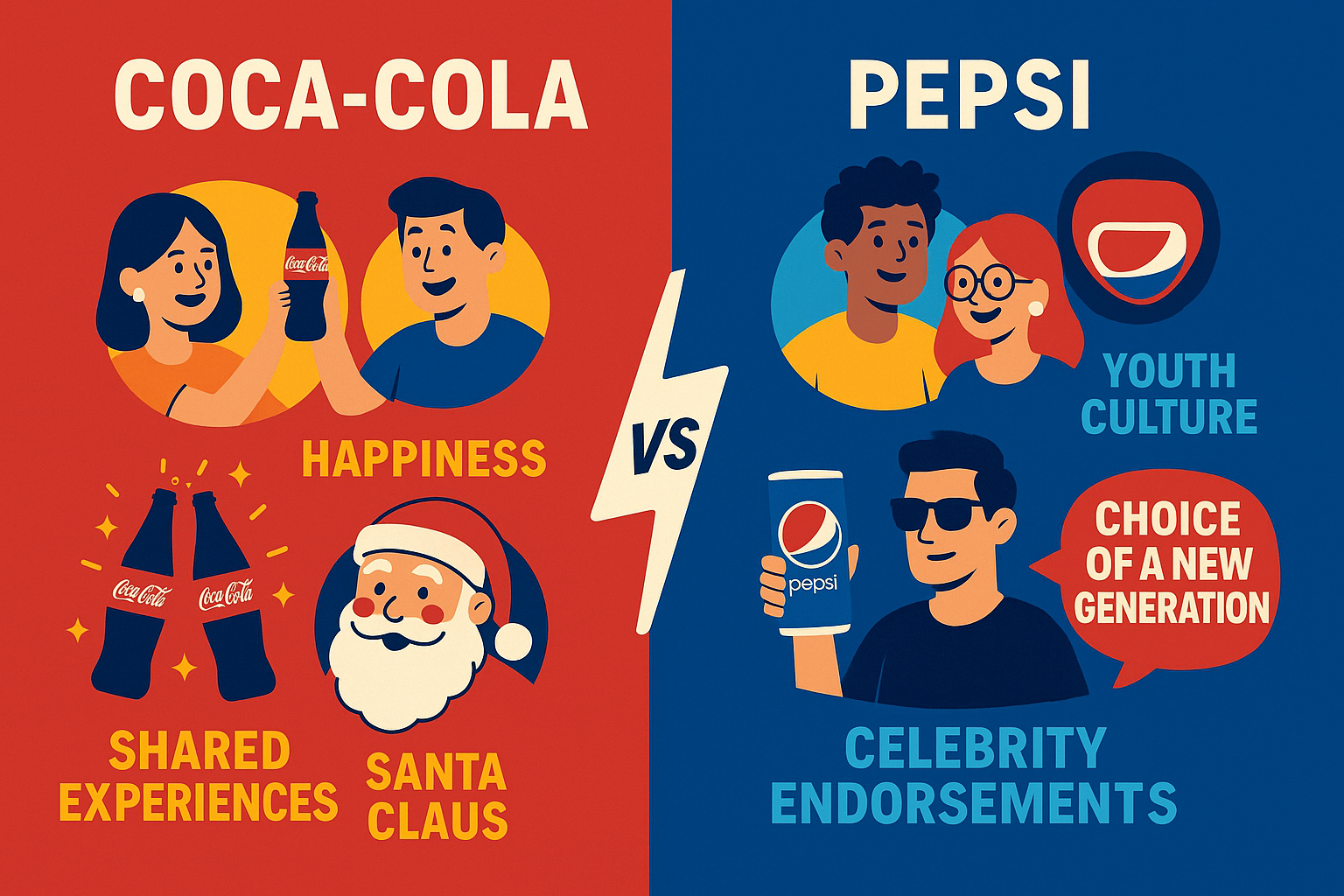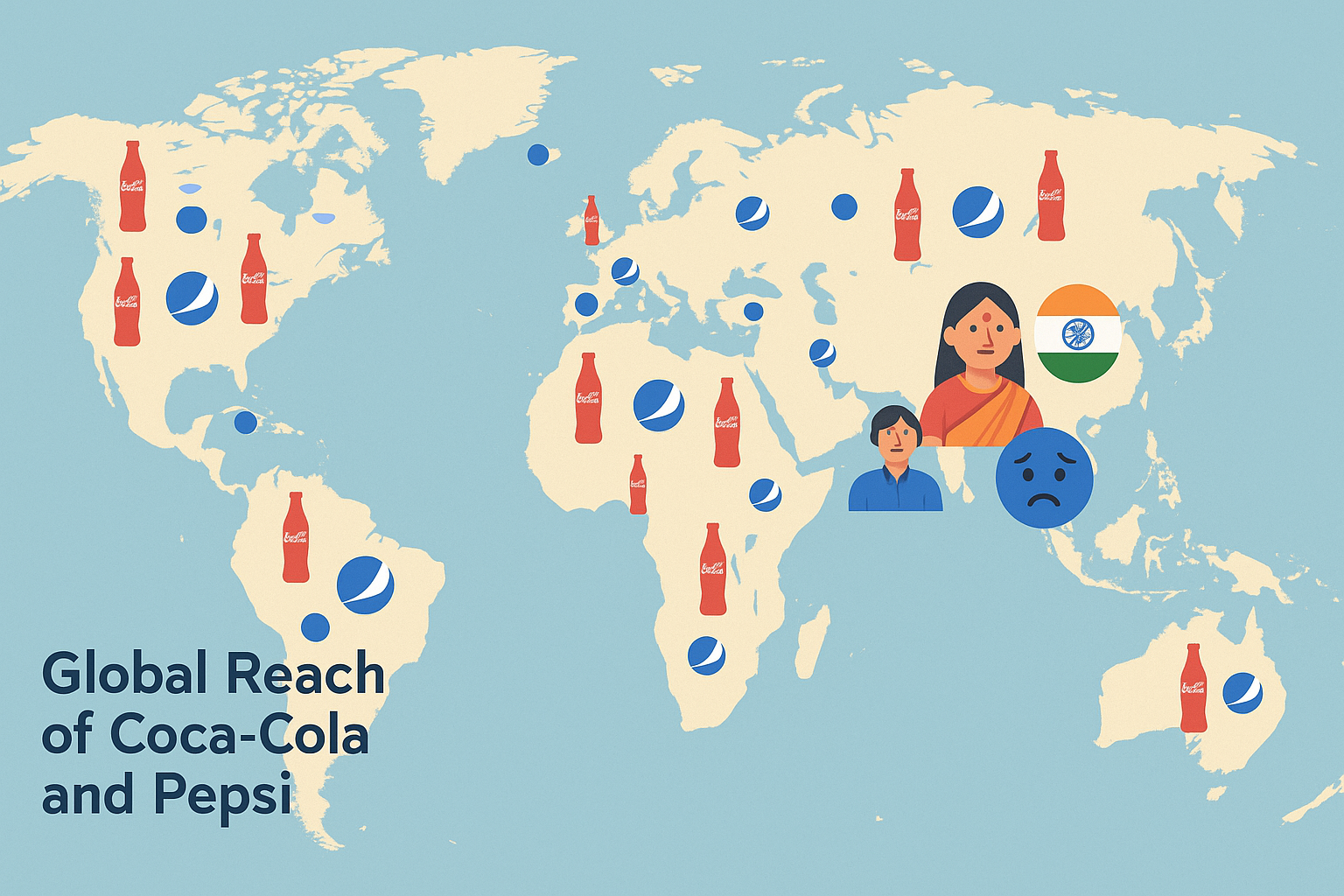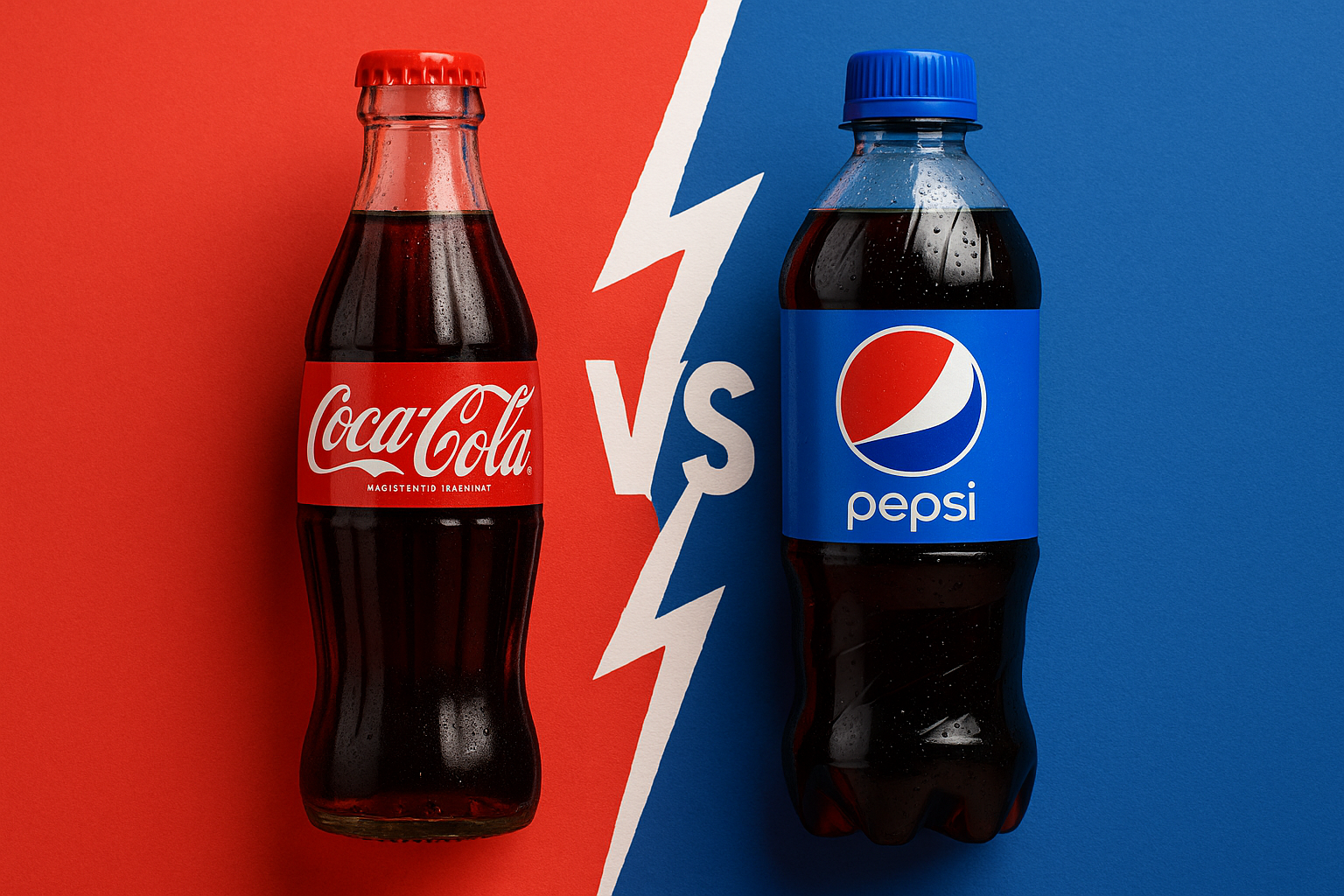The rivalry between Coca-Cola and Pepsi is one of the most iconic and longest-standing in business. For over a century, they’ve battled for market share, customer loyalty, and global brand recognition. Their competition teaches invaluable lessons that apply to any business. This article explores key events, strategies, and missteps from the Cola Wars and how you can apply them to succeed—and avoid common pitfalls.
The Origins
Coca-Cola was created by John Pemberton in 1886 and Pepsi by Caleb Bradham in 1898. Both began as soda sold in pharmacies and eventually grew into household names, sparking a natural rivalry from day one.
Key Point: Be the first to define a unique value proposition and establish strong early branding. Leadership often belongs to the brand that creates the category.Marketing and Branding Strategies
Coca-Cola focused on emotional marketing—happiness and shared experiences. Slogans like “Open Happiness” and its use of Santa Claus solidified its image. Pepsi, on the other hand, targeted younger generations as “the choice of a new generation,” leveraging celebrities and pop culture.
Key Point: Understand your audience and market to their emotions and lifestyle. A distinct brand personality creates differentiation.
Product Diversification
Both brands expanded beyond colas—Coca-Cola with Sprite, Fanta, Dasani, and PepsiCo with Lay’s, Gatorade, Tropicana, etc. Diversification reduced reliance on cola sales and tapped into broader markets.
Key Point: Expand strategically. A diverse product portfolio lowers risk and increases reach. Ensure new products align with your brand's core values.
Global Expansion and Localization
Both companies went global but with varied success. Pepsi stumbled in India due to cultural missteps, while Coca-Cola adapted better to local tastes and norms.
Key Point: Do your cultural research. Localize messaging and products while preserving global brand consistency.Competitive Pricing and Tactical Wars
Price wars, promotions, and legal battles characterized much of their rivalry. However, over-focusing on price hurt profit margins and brand value. Loyalty programs and value-based strategies proved more sustainable.
Key Point: Avoid racing to the bottom. Competing on price damages brand perception; compete on value and quality instead.Notable Failures and Lessons Learned
- New Coke (1985): Coca-Cola changed its formula, triggering customer backlash. They returned to the original recipe shortly after.
- Tropicana Redesign (2009): PepsiCo’s packaging update confused customers, leading to a 20% drop in sales.
Lessons from the Cola Wars
This iconic rivalry shows that competition drives innovation and growth—but long-term success requires more than outperforming rivals. Businesses must evolve with customer needs, diversify smartly, and learn from both success and failure.
Applying These Lessons to Your Business
- Stand Out: Build a unique identity and emotional connection with your audience.
- Know Your Market: Tailor strategies and offerings to local and cultural nuances.
- Innovate Wisely: Align new initiatives with customer expectations.
- Purposeful Diversification: Explore new areas that complement your core business.
- Learn from Mistakes: Use setbacks as a springboard for growth—yours or your competitors.
Apply these insights to thrive under pressure and build a brand that lasts.
